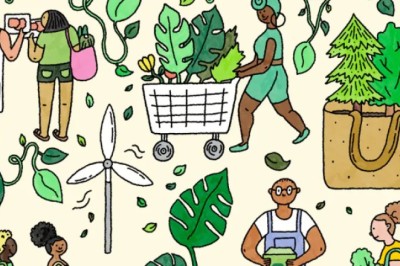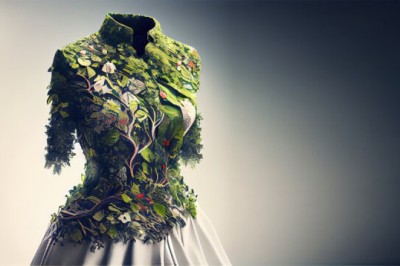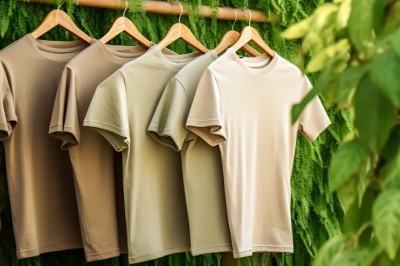views

In today's competitive world, individuals can no longer afford to ignore the impact of rampant consumerism on the environment. There has been a shift toward sustainability, and there appears to be a leap toward circularity within the fashion industry, known to be one of the most environmentally destructive industries on the planet. Through advanced strategies, circular fashion seeks to build a sustainable economy where waste is eliminated, resources are conserved, and clothing pieces last longer. This article will focus on how tech-enabled circular fashion is changing the industry to become more sustainable.
What is Circular Fashion?
Circular fashion is a system in which clothes, shoes, and accessories are designed, produced, and circulated in such a way as to minimize waste. Rather than the traditional “take, make, dispose” model movement, circular fashion seeks to keep resources in use by embedding a closing-the-loop design philosophy.
This perspective can be integrated within the framework of the circular economy, including an emphasis on:
- Minimizing extraction of resources
- Maximizing the lifetime of products
- Material recovery and material transformation
- Eliminating the genesis of waste
The vision is to build a loop. That is, materials will always remain in the system and will never be disposed of in landfills.
The Environmental Impact of Fast Fashion
Before elaborating on the role technology plays in supporting circular fashion, it is important to first explain why this change is important. Fashion is among the most polluting sectors today:
- Waste: Every year the industry produces thousands of tons of textile waste some of which are non-biodegradables.
- Water Usage: In the case of a single cotton shirt, it may take approximately 2,700 liters of water.
- Carbon emissions: The fashion industry accounts for nearly 10 % of global carbon emissions.
- Microplastics: Microplastics are released during the washing of clothes containing synthetic fibers such as polyester GETS.
The situation is made worse by fast fashion which is a result of cheap material production and mass fabrication strategies. In conjunction with new technological advancements, circular fashion would be essential in addressing all these environmental challenges.
How Technology is Driving Circular Fashion?
The use of technology could be crucial to improve connections and communication through recycling, and transparency in the supply chain or product design. Some of the key technologies driving forward circular fashion as we know it:
1. Recycling Technologies
Even though regular recycling techniques are usually less effective in their results, fresh new technologies and current styles have given birth to significantly a whole new kind of materials that will feel like industrial textile ingredients.
- Enzymatic And Chemical Recycling: Also known as textile-to-textile processes, these technologies enable synthetic fibers such as polyester to be decomposed into their building blocks and turned back into new clothing.
- Material Recycling: Advances in material recycling make it possible to retrieve fibers from used garments and spin them into fresh textiles. For example, companies such as Evrnu recycle textiles and create new high-quality fabrics from the fibers of old clothes.
2. Blockchain for Transparency
There is a growing demand from consumers to understand where their clothes come from. The origin of the blockchain technology being developed to print all phases from scratch:
- Supply Chain: It enables end-to-end traceability from raw materials sourcing, manufacturing, distribution, and even resale by providing transparency & accountability. For instance, Provenance is using blockchain to help brands let consumers track where their purchase came from back to its source. Which in turn helps tell a story of ethical and sustainable practices.
This will build trust with regards to that, and also make sure they are eco-compliant.
3. 3D Printing
How 3D printing is changing fashion completely
- Zero Waste Production by 3D printing results in fabric waste minimization REQUIREMENT
- Tailormade On Demand: 3D printing is allowing manufacturers to produce low-lot sized products that perfectly fit the customer's desires, resulting in less mass production and saving cost from keeping inventory.
This technology also makes upcycling possible, converting waste into high-end products.
4. Automated Machine Learning techniques in Design thinking
How AI Is Transforming Fashion Through Sustainable Design
Design of the future AI-powered design tools to simulate materials and test them before they go into physical production to minimize waste. AI can foresee trends and demand, thus manufacturers will be able to produce clothing just as much as the world needs it meaning with Reasonable Manufacturing Quantity.
More importantly, AI-based algorithms can optimize the lifecycle of clothes by providing recommendations on how to recycle or repurpose clothing when they have reached their end-user life.
5. Eco-friendly and Intelligent Fabrics
One of the most important features that circular fashion has to overcome is material innovation.
- Eco materials such as mushroom leather, orange fiber, or spider silk (all plant-based and biodegradable).
- Smart Fabrics: These fabrics which contain embedded sensors or are designed with nano-technology can alert a wearer to repair, or recycle the smart fabric for it to be used longer and then eventually join the circular economy.
The Role of Brands in Circular Fashion
The role of brands cannot be understated even as technology drives change. If the fashion industry wants to come closer to a closed-loop system it will need brands that operate on circular practices themselves.
1. Designing for Durability
Designing long-lasting clothes is one of these important initial steps towards creating a circular system. This involves:
- Selecting high-quality, durable materials
- Designing timeless, not trending designs
- Designing clothes to be repairable, reusable and recyclable
2. Take-Back Programs
Thousands of brands are introducing take-back or resale programs whereby customers can return old clothes to be recycled, refurbished, and resold. For instance:
- H&M Garment Collecting initiative keeps fabrics out of landfills by letting customers bring in old duds for 15% off. It is a win-win for both sides, saving money on new goods and keeping trash to a minimum.
3. Product as a Service (PaaS)
The "Product as a Service" model is an innovative type of circular business. The system works more or less like this, consumers are renting clothes and not purchasing them.
Rent the Runway and HURR Collective are a few businesses offering rented clothing for occasions, an alternative to purchasing cheap garments that cater to impulsive trends.
By doing so, it prevents clothes from entering and exiting its rotation too quickly- the fast disposable fashion that ultimately leads to waste.
Circular fashion is the future
Fashion and technology are finally ready for their convergence, which will change the way we think about fashion forever. While we expect the circular fashion to thrive, here are some of the trends that will dominate its future:
- Effective Policy Changes: Ongoing changes in policy by several governments worldwide to enable a circular way of operation have been leading, examples can be taken in the Extended Producer Responsibility (EPR) placing responsibilities on brands throughout the value chain.
- Convergence: Implementing a closed-loop system is not possible without holistic collaboration along the supply chain, from raw material suppliers through to retailers and recyclers.
- Consumer EducationConsumers need to be educated about the benefits of circular fashion and sustainable practices for it to become a mainstream trend.
Conclusion
A circular fashion industry can bring us one step closer to a more responsible level of production and establish new brands. The industry can make huge strides towards lowering its environmental footprint by adopting recycling innovations, transparent supply chains, and the use of AI to better leverage existing materials. However, for circular fashion to truly take off in a big way these habits need to be introduced by both the brands and consumers hand-in-hand. We can progress towards a circular system, where waste is eliminated and dare I say change the future of fashion forever.











Comments
0 comment